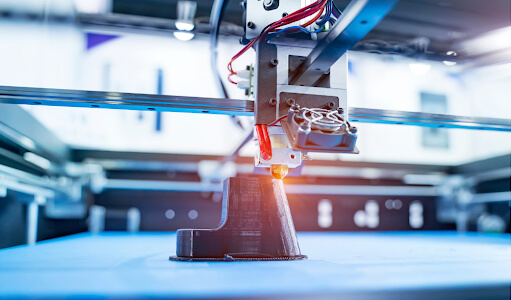 1-800-805-5783
1-800-805-5783 
On-the-go enterprise planning by incorporating evolving technologies is the current business dynamic. As we have seen, AI tools are changing how businesses make profits by appealing to a larger consumer base. Similarly, 2022 has seen the advent and development of many technologies like datafication, smart devices, extended reality, artificial intelligence, and machine learning software and tools. The sustainable business models will be the ones that owe their success to developing their intelligent digital networks and AI-based ecosystems. Developing the business architecture of an enterprise with Interactive customer-based ecosystems will make them sustainable in the competitive business environment. Creating business models that dynamically adapt and incorporate evolving technologies is crucial.
Insight into Some technologies of 2022
The digital twin: What is it all about?
As the definition goes, a “digital twin” is a program capable of simulating any real-time object, thing, or business process. In essence, a digital twin gives the advantage of correcting any failure in the process of development of the product or process even while manufacturing. ‘ digital twin’ development is done using AI and machine learning tools and software. The use of ‘digital twin’ is critical for businesses where the cost of failure is high and becomes a niche consideration for profitability. Developing ‘ digital twins’ also helps in the process and product evaluation without actual testing, as the digital twin can be analyzed and assessed virtually for performance and failure issues.
Check out the KPMG case study, for instance.
Many major cloud providers have adapted to the digital twin models. Microsoft developed “ digital twin ontology” for the construction business. AWS developed digital twin technology called” IoT TwinMaker and FleetWise “ for vehicle fleets and industrial equipment. Google again launched a digital twin service called “ Logistics and Manufacturing.”
Digital twins can extensively be used in manufacturing industries as they can be used to do fatigue and corrosion testing without much cost.
Datafication:
What is the datafication of a business, and how do traditional and datafied companies differ?
The concept of datafication acquired its real meaning when digitally competitive businesses, unlike the traditional ones, started implementing “predictive analysis” of their business outcomes using the latest technologies of “ big data” analysis.
Datafication means the conversion of every business model activity into data; it is just not the digitization of data available in a business model. Digitization can be understood as the simple conversion of an organization’s analog data into digital data. It is far more than that. Datafication means converting every physical activity in the business process into data. Datafication will revolutionize any kind of business and enterprise model. For developing, say, a “ smart city,” waste management, energy management, etc, can be achieved by adapting to relevant “ datafication” models.
Predictive business models like Google search and Netflix recommendations rely totally on datafication. Datafication relies on the “Four V” concept, which is:
4 Value: many business models depend on the security and value a business can guarantee its customers while handling their data. Value is an important aspect of datafication that is gaining momentum nowadays.
Netflix uses “the Netflix recommender system,” which runs customized “datafication” algorithms that analyze socio-technical user data to allow viewers worldwide to view their preferred content.
3D printing:

This technology is also known as “ digital fabrication technology.” It’s making rapid strides in the healthcare, automobile, aviation, energy, and agriculture industries.
According to the https://www.sciencedirect.com/ report:-
“Bimetallic 3D-printed Ectroctalysts” is a promising technology that can be an alternative for energy conversion devices using nonrenewable, exhaustible, and expensive carbon-fossil-based fuels. However, technology is yet to develop to produce less expensive metal electrodes.
Laser-powder bed fusion -LSBF” is an additive digital fabrication technology gaining impetus in various manufacturing industries. This technology allows the industry to develop high-power, corrosion-resistant industrial components. Much research is being conducted on LSBF-produced 316L SS steel. This variety of steel can be extensively used in industries that manufacture high-grade components, from utensils to nuclear and aerospace industries.
Conclusion:
To conclude, “Business Intelligence” is the keyword that is picking up, and enterprise adaptation to technologies like “ datafication” is increasingly necessary for businesses to stay relevant in the face of competition. Many emerging technologies, such as smart devices, extended reality, genomics, artificial intelligence, machine learning, etc., have been morphing business networks and revolutionizing performance, quality, and productivity.